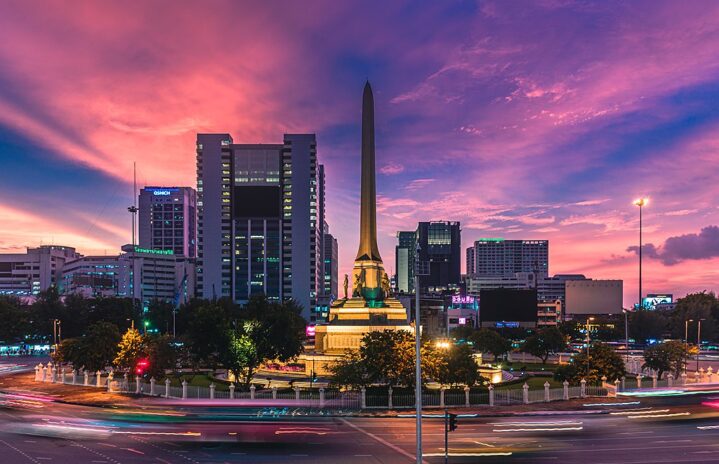
The History of Victory Monument in Bangkok
Victory Monument in Bangkok was created in 1941 to commemorate the Thai victory over the French during the very short-lived Franco-Thai War. This impressive statue is located in the middle of the traffic roundabout at the intersection of Phahonyothin, Ratchawithi, and Phraya Thai Roads, near Victory Monument BTS station. In 1940 – 41, Thailand was engaged in a short conflict called the Franco-Thai War.
It was fought against the French colonial or Vichy authorities in French Indochina. The war was over some parts of Laos and Cambodia that Thailand was forced to give up by the French in 1893 and 1904. These coerced land transfers, as did all previous land cessations, still intensely rankled nationalist Thai sentiments as illegally ceded. There was still a burning resentment in the kingdom ever since over these actions and always the desire to reclaim what they felt were rightly theirs.
History of the Franco-Thai War
The fighting quickly started between both nations in December 1940. It ended just as quickly in January 1941 with no real conclusion. The French had 421 killed or wounded, the Thais lost 54 troops. The Japanese, who were in control of French Indochina, imposed a settlement on both parties. This was done as the Japanese did not wish to see two potential regional allies get into a prolonged battle while it was secretly preparing to conquer all of SE Asia. The final settlement did not please either side but it maintained the peace. The Thais got less territory returned than they demanded; the French gave up more than they had hoped to retain.
A Complete Success, According to the Thai Government
In any event, the war was hailed by the Thai government as a complete success. Thailand’s military dictator, Field Marshal Plaek Phibunsongkhram, celebrated the victory by ordering the creation of an imposing monument. The statue was quickly commissioned, designed, and erected on 24th June 1941. It was built in the shape of five bayonets clasped together forming an Egyptian-style obelisk with a pentagonal base. It is 140 metres tall. It contains five figures from each of Thailand’s three military services, the Army Navy and Air Force, plus the Police Force and other Thai civilians who were also involved in the fighting.
The figures are depicted in Western “heroic” style. The figures were created by the Italian sculptor Corrado Feroci, who was more familiarly known under the Thai name Silpa Bhirasi. The sculptor is said to actually dislike the combination of his sculptural work with the central obelisk. He referred to the monument as “The Victory of Embarrassment.” On the lower obelisk walls are inscribed the names of the 656 civilians and soldiers who were killed during the brief conflict.
However, with the defeat of Japan at the end of WWII in August 1945, the victorious Allies forced Thailand to evacuate these territories they won in 1941 and return them back to French control. Some Thais considered this as a monument to futility, others felt it was a symbol of a discredited military imposed regime. In any event, Victory Monument remains one of the city’s most easily recognisable memorials and most familiar landmarks.
Photo credit to samfotograph under CC4.0



